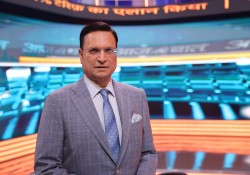
Gen. Asim Munir cornered : Either stop attacks or face defeat
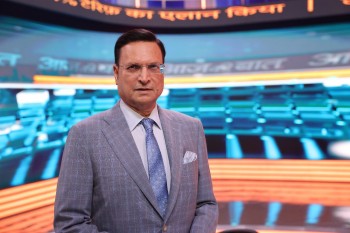 In a swift response, Indian armed forces on early Saturday carried out attacks on eight key Pakistani air bases in Rafiqui, Murid, Chaklala, Rahim Yar Khan, Sukkur, Chunian, Sialkot and Pasroor radar site. Indian Air Force fighter jets used air-launched precision weapons to inflict maximum damage but ensure minimum collateral damage to civilian population. Army Col. Sofiya Qureshi said, the Pakistani targets included “technical infrastructure, command and control centres, radar sites and weapon storage areas across the border.”
In a swift response, Indian armed forces on early Saturday carried out attacks on eight key Pakistani air bases in Rafiqui, Murid, Chaklala, Rahim Yar Khan, Sukkur, Chunian, Sialkot and Pasroor radar site. Indian Air Force fighter jets used air-launched precision weapons to inflict maximum damage but ensure minimum collateral damage to civilian population. Army Col. Sofiya Qureshi said, the Pakistani targets included “technical infrastructure, command and control centres, radar sites and weapon storage areas across the border.”
Earlier, Pakistan Air Force attacked 26 locations including Indian Air Force stations in Udhampur, Pathankot, Adampur and Bhuj, but these air bases sustained limited damage to equipment and personnel. Describing it as “a reckless move”, the spokesperson said, Pakistan targeted medicare centres and school premises located at IAF air bases in Srinagar, Awantipora and Udhampur. A high-speed missile launch was also attempted towards Punjab at 1:40 am, said Wing Commander Vyomika Singh.
The army spokesperson said, Pakistan intensified shelling along Line of Control and international border, targeting Kupwara, Baramulla, Poonch, Rajouri and Akhnoor. In Rajouri, Additional Deputy Commissioner Raj Kumar Thapa was killed and two of his assistants were critically injured when Pakistani shells fell on his official residence. Several civilians were injured in Pakistani attacks on Ferozepur and Jalandhar.
In Delhi, on Saturday, Prime Minister Narendra Modi was briefed by Defence Minister Rajnath Singh, NSA Ajit Doval, and all three service chiefs. US Secretary of State Marco Rubio spoke to Ajit Doval and Pakistani army chief Gen. Asim Munir on ways to de-escalate tensions immediately. India has made it clear that the onus of de-escalation falls first on Pakistan which initiated drone and missile attacks on Indian installations after India’s May 7 air strikes on terror hideouts inside PoK and Pakistan.
In Pakistan, the civilian leadership does not matter much. The onus is now fully on the Pakistani army chief Gen Munir. It is the Pakistani army chief who has to decide when to call off his drone and missile attacks and order a halt to artillery shelling in Jammu & Kashmir. The common people in Pakistan have seen through the fake information being spread by Pakistani army about inflicting losses on Indian army and air force, but on the ground, the situation is quite different. On Saturday, Foreign Secretary Vikram Misri showed pictures of most of the Indian air force bases intact despite attacks by Pakistan’s kamikaze drones. The cat is now out of the bag. Even China on Saturday appealed to Pakistan to exercise restraint and de-escalate the situation. The ball lies squarely in Pakistan’s court and their army chief has to take the call. Pakistan stands completely isolated and it has not received any support from either the US or China or the Middle East countries.
Pakistan’s propaganda war : fake claims busted
In a swift response, the government of India has debunked all fake claims being made by Pakistani army about the ongoing missile and drone attacks. Pakistan on Saturday claimed that a female Indian Air Force pilot Squadron Leader Shivangi Singh has been captured in Kotli in PoK. This was immediately described as fake news by Press Information Bureau of the Govt of India. PIB Fact check immediately responded saying that no Indian female pilot has been captured and the news was fake. Pakistan army and government have been recycling old photos and videos as latest ones about so-called losses to Indian said. Pakistani social media handles are presently hper-active making false claims about Indian losses like Indian Rafale and Sukhoi jets being downed and Indian pilots being captured. Pakistani media has been circulating these falsehoods as gospel truth. Top Pakistani officials and even ministers are busy promoting unverified and doctored content on social media.
On Friday, Indian Foreign Secretary Vikram Misri pointed out how Pakistan has been trying to give a communal hue to the ongoing attacks by alleging that India trying to target Gurdwara Nankana Sahib in Pakistan. Misri described this as “deranged fantasy”. He revealed that Pakistani troops shelled a gurdwara in Poonch and some local Sikhs lost their lives in the attacks. Similarly, Pakistani troops fired artillery on a Christian missionary school injuring several students.
Pakistan is fastly losing the battle on the ground with its air defence systems smashed by IAF. This is the reason why it is resorting to a barrage of misinformation to misguide people in India. We should all be careful when we find such claims on social media. Our first step should be to ignore all such posts and we should not circulate or forward these posts in any manner.

India-China Understanding: Much to learn for the West
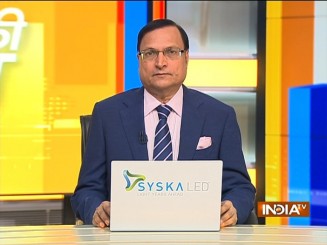 This year’s Diwali will be a different one for our brave jawans and officers deployed near the Line of Actual Control in eastern Ladakh. Nearly 50 per cent of troop disengagement has been completed in Depsang and Demchok by Friday evening, and the Indian Army plans to begin patrolling in coordination with the Chinese army in the two areas by October-end. Talks are going on over issues like ‘buffer zones’ which had been created earlier in the region with high altitude.
This year’s Diwali will be a different one for our brave jawans and officers deployed near the Line of Actual Control in eastern Ladakh. Nearly 50 per cent of troop disengagement has been completed in Depsang and Demchok by Friday evening, and the Indian Army plans to begin patrolling in coordination with the Chinese army in the two areas by October-end. Talks are going on over issues like ‘buffer zones’ which had been created earlier in the region with high altitude.
The disengagement in Depsang and Demchok will be over by October 28 or 29, and the patrolling from both sides, with prior intimation to avoid face-offs, will begin after mutual verification. Dismantling of temporary posts, sheds, tents and other structures and pullback of troops in Depsang and Demchok to pre-April 2020 position is going on and is being closely monitored both on the ground and from the air by using drones.
In Demchok, Indian troops are moving back towards the west from Charding Nullah, while Chinese army has withdrawn some of its vehicles after dismantling nearly a dozen temporary structures.
Two days ago, Prime Minister Narendra Modi and Chinese President Xi Jinping had discussed the border issue and it was decided to resume Special Representative level talks on solving the vexed India-China border dispute. Till last week, nobody could have imagined that troops of both sides would resume patrolling near the friction points in Ladakh so soon, and a tension-free Diwali would be celebrated by our brave jawans.
Prime Minister Modi had been roundly criticized by our opposition leaders for the last two years over the Ladakh border tension issue. Opposition leaders had been alleging that China has occupied a large part of our territory in Ladakh and Modi has “surrendered” before the Chinese. Modi never replied, nor got provoked over these allegations.
Modi preferred to work silently, used diplomatic techniques and displayed military power. He was neither in awe of the Chinese, nor did he bow down. I think Modi might have used the good offices of his friend Russian President Vladimir Putin for improving relations with China. It suits Putin if India and China join hands, and appear to stand with Russia.
Putin can then claim before the West that Russia is now a major power that is not isolated from the rest of the world. Those who have been making fun of Modi and asking questions on when he would show his “red eyes” at China, will now have red eyes.
If India-China relations improve, it will be a pain in the neck for Rahul Gandhi. Rahul will then realize that he made a mistake in trusting the Chinese more rather than believing in Modi’s claim.
The world is today abuzz with talks about the rapprochment between India and China and how the border issue in Ladakh was resolved through bilateral talks. This can be shown as an example to the European Union and other Western powers on how to bring an end to the ongoing conflicts in Ukraine and Middle East.
Determined India, China’s compulsion : Deal done
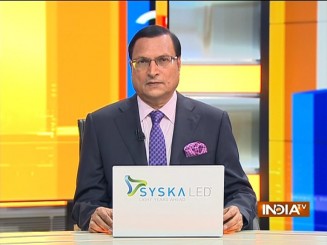 Prime Minister Narendra Modi and Chinese President Xi Jinping on Wednesday put their seal of approval on the agreement between India and China on resuming patrolling near the friction points in eastern Ladakh. The two leaders also decided to resume Special Representative level talks to iron the vexed India-China boundary dispute. These talks have not taken place since 2019, when tension flared up in Dokalam and Ladakh. Both the leaders decided to take relations forward from a “strategic and long-term perspective, enhance strategic communication and explore cooperation to address developmental challenges.”
Prime Minister Narendra Modi and Chinese President Xi Jinping on Wednesday put their seal of approval on the agreement between India and China on resuming patrolling near the friction points in eastern Ladakh. The two leaders also decided to resume Special Representative level talks to iron the vexed India-China boundary dispute. These talks have not taken place since 2019, when tension flared up in Dokalam and Ladakh. Both the leaders decided to take relations forward from a “strategic and long-term perspective, enhance strategic communication and explore cooperation to address developmental challenges.”
The immediate outcome of the bilateral meeting could be that India would soon reopen its doors for Chinese investment, which Xi Jinping needs badly. But the pace of reopening investment shall depend on what happens on the ground in Ladakh and whether Chinese army implements the agreement sincerely. It was also decided in Wednesday’s summit meeting that India and China’s special representatives will discuss resuming Mansarovar pilgrim yatra.
External Affairs Minister S. Jaishankar, National Security Adviser Ajit Doval, Foreign Secretary Vikram Misri and India’s Sherpa at BRICS Dammu Ravi were present with PM Modi at the meeting, while the Chinese President was assisted by Foreign Minister Wang Yi and Chinese Communist Party secretary Cai Qi.
Before the meeting began, Prime Minister Modi said, “mutual respect, mutual trust and mutual sensitivities” were essential for moving forward in bilateral relations. President Xi said, both India and China were two big economic powers and they should present an example of friendship to the rest of the world. Jinping said, both India and China want a multi-polar world and end Western hegemony.
The meeting between Prime Minister Modi and President Xi is an important one and it has ended five years of tense deadlock. One needs to revisit the background in which India-China friendly relations went on a downward spiral because of tension near LAC.
In Dokalam near the Bhutan border, when Chinese troops confronted the Indian army, our brave jawans stood their ground for 72 days and did not allow the Chinese troops to move an inch forward. China again broke mutual trust, when its army ignited tension in Ladakh. It built big infrastructures on its side of the border which posed a security risk for India. India became active on a war footing, built roads, bridges and tunnels near the border at breakneck speed and under PM Modi’s instructions, made mirror deployment of its troops to match Chinese buildup. It was then that the Chinese strategists realized that this was a new India, which was not going to be browbeaten.
In the last three years, Chinese army did not make any big transgression, and instead, sent feelers for resumption of trade and investment, even as talks on reducing border tension was going on. The downslide in investment and trade also affected Indian industrial sectors like electronics, pharma and chemicals, which were dependent on China for procuring raw materials.
Despite facing losses, India stood its ground saying that until and unless there is agreement on the border standoff, talks on other issues cannot be reopened. India did not bow despite economic losses. Ultimately, China understood and Indian diplomacy succeeded.
After several months of talks, China agreed for patrolling deal to be followed by disengagement. By reaching a deal, India and China have told the rest of the world that they were moving forward to normalize relations. Prime Minister Modi’s personal friendship with Russian President Vladimir Putin helped in bringing about agreement.
Though such intervention are never admitted officially, one point is clear: India has told the world that it shall never compromise with its self-respect in any situation. This was underlined by PM Modi at Wednesday’s bilateral, when he said that peace and stability on the border was a top priority for both countries, but, in the next sentence, he said, that “mutual trust, mutual respect and mutual sensibilities” were of essence for improving relations. Modi’s message is clear: India wants good relations with its neighbours, but it will never compromise on the issue of self-respect.
India-China Bhai Bhai: Welcome, but be careful
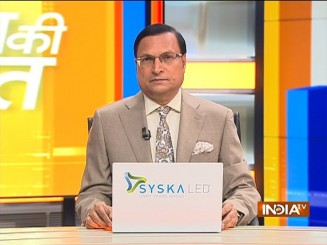 A day before Prime Minister Narendra Modi was due to have a first bilateral meeting in five years with Chinese President Xi Jinping in Kazan(Russia), a Chinese foreign ministry spokesman in Beijing confirmed that India and China have “reached a solution on relevant matters” (in eastern Laddakh). He said, China would work with India to implement it, but declined to provide details.
A day before Prime Minister Narendra Modi was due to have a first bilateral meeting in five years with Chinese President Xi Jinping in Kazan(Russia), a Chinese foreign ministry spokesman in Beijing confirmed that India and China have “reached a solution on relevant matters” (in eastern Laddakh). He said, China would work with India to implement it, but declined to provide details.
Indian Foreign Secretary Vikram Misri had announced on Monday that both the countries have agreed on patrolling arrangements following negotiations to end the four-year-long standoff. Misri expressed hope that this may lead to eventual disengagement of armies deployed on both sides of Line of Actual Control and eventually a resolution of disputes that arose in 2020.
Details of the agreement that are unofficially available show that Indian and Chinese troops can now patrol within their borders in Depsang Plains and Demchok. Troops of both countries can patrol their areas twice a month. To avoid any chance of confrontation, each patrolling team on both sides will not have more than 15 soldiers. Troops of both countries can patrol by staying 200-300 metres away from LAC.
Under the agreement, Indian and Chinese army commanders will coordinate between each other before sending their patrolling parties. The objective is to avoid recurrence of confrontation that had taken place in Galwan valley in May 2020, when 20 Indian soldiers were martyred and a large number of Chinese troops were killed. In July, 2020, both armies had disengaged in Galwan and Hot Springs, and in 2021, they had withdrawn their troops in Gogra and Pangong Tso. But both troops are still locked in a close confrontation for the last four years in Depsang Plains and Demchok border points. Now, the agreement also covers both these areas.
In Depsang, Indian troops can patrol upto Point 10 and Point 13, which had come to a standstill during the last four years. Chinese army will withdraw its troops from Depsang and dismantle its sctructures.
According to the agreement, troops of both countries will withdraw from LAC during winter, and for better coordination, commanders of both sides will have meetings every month. Though official details are not available, one must understand the broad meaning behind this agreement.
One, Chinese troops will return from those areas they had occupied four years ago, and the status quo situation of April, 2020, will be restored. A plan has been prepared for resolving the border standoff that has created tension. Two, the adverse effects on India-China bilateral trade that had taken place following the border standoff, will now end in a phased manner. There are many industrial sectors in India that are dependent on raw material procurement from China. These sectors can now heave a sigh of relief. Three, Congress leader Rahul Gandhi had been frequently raising the China border issue at his public meetings, while AIMIM chief Asaduddin Owaisi had been alleging that Chinese troops have occupied Indian territory. These leaders will now lose an issue that they have been raising frequently. Four, it seems that Russian President Vladimir Putin played an important role behind the scenes to bring about a reduction in tension between Modi’s India and Jinping’s China. India and China are the founder members of BRICS group. By ending tension on the border, they have conveyed an important message to those parts of the world which are facing conflicts. For example, Ukraine and Middle East.
In his bilateral meeting with President Putin on Tuesday, Modi stressed on the point that “war cannot be a solution for any dispute and solution can be arrived at only through negotiations”.
India-Pak relations: Terrorism has to stop for normalcy
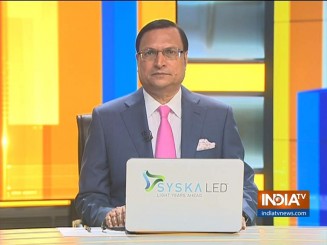 The dastardly terror attack on innocent labourers within 100 hours of a new National Conference government being sworn in Jammu & Kashmir has come as a shock to people both in the Valley and the rest of the country. Among those killed were labourers from Bihar, MP and Punjab who were gunned down by Pakistan-backed terrorists, during dinnertime at a campsite of a tunnel construction company in Ganderbal district. The Resistance Front (TRF), an offshoot of Pakistan-based Lashkar-e-Taiba claimed responsibility. Among those killed was a Kashmiri doctor Dr Shahnawaz Dar, who was supposed to return home for the post-wedding function of his daughter.
The dastardly terror attack on innocent labourers within 100 hours of a new National Conference government being sworn in Jammu & Kashmir has come as a shock to people both in the Valley and the rest of the country. Among those killed were labourers from Bihar, MP and Punjab who were gunned down by Pakistan-backed terrorists, during dinnertime at a campsite of a tunnel construction company in Ganderbal district. The Resistance Front (TRF), an offshoot of Pakistan-based Lashkar-e-Taiba claimed responsibility. Among those killed was a Kashmiri doctor Dr Shahnawaz Dar, who was supposed to return home for the post-wedding function of his daughter.
Architectural designer Shashi Bhushan Abrol also fell to the bullets of terrorists. Lt. Governor of J&K Manoj Sinha and Home Minister Amit Shah have asked security forces to track down and eliminate the perpetrators of this dastardly attack. Chief Minister Omar Abdullah said, people of J&K have given their reply to terrorists by taking part in elections in large numbers and they would never allow any halt in the pace of progress. National Conference leader Dr Farooq Adullah said, Pakistan will have to face consequences if it continues with such terror attacks. Already, National Investigation Agency has begun its probe and security has been strengthened near all infrastructure projects in the Valley. Pakistan-based Sajjad Gul, the chief of TRF, is said to be the brain behind this terror attack. During the last one year, terrorists had been carrying out sporadic attacks against labourers from Bihar and UP in J&K.
In June this year, they had killed nine persons after attacking a bus, but this was a major attack, after 12 years, when a migrant labourers’ camp at a tunnel project, which will link Srinagar with Leh, was targeted. Clearly, it shows Pakistan’s frustration over the victory of democracy in Jammu & Kashmir, where both Lok Sabha and assembly elections were held peacefully this year and a large number of voters participated. Pakistan wants to stop the pace of work that is going on railway, roads, bridges and tunnels, and in order to achieve this, it has asked the terrorists to take out soft targets like migrant labouers. Pakistan will have to pay for its pernicious act. It was hardly three days ago when Pakistan Muslim League (N) chief Mian Nawaz Sharif met Indian mediapersons and spoke about the need for burying the past and forging ffriendship with India. Nawaz Sharif was explaining how former PM Imran Khan followed anti-India policies which have brought about a stalemate in bilateral relations. Nawaz Sharif must understand one key point: Until and unless the Pakistan army stops sending terrorists to India, and its spy agency ISI discontinue giving training and funds to terrorists, relations between India and Pakistan can never become normal.